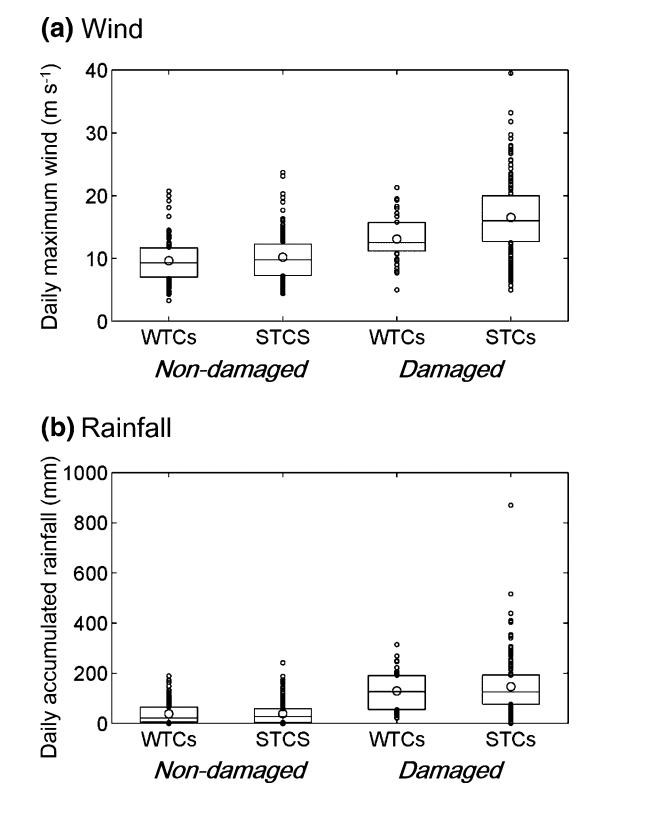Park, D.-S. R, C.-H. Ho, J. Kim, K. Kang, and C. C. Nam, : Highlighting socioeconomic damages caused by weakened tropical cyclones in the Republic of Korea. Nat. Hazards, 82, 1301-1315 , https://ideas.repec.org/a/spr/nathaz/v82y2016i2d10.1007_s11069-016-2244-x.html
Key Points
Abstract
To alleviate enormous socioeconomic damages by tropical cyclones (TCs), the Korea Meteorological Administration (KMA) retains a special warning system for strong TCs (STCs, maximum wind speed of the best-track data ≥17 m s−1), but not for relatively weak TCs (WTCs) which are not regarded as threatening as STCs; the warning system encompasses complex extreme phenomena such as gust, downpour, storm surge, and wind wave possibly arising from STCs. However, it is necessary to examine if WTCs can be actually as harmful as STCs with various extreme phenomena. Here, we compare the risks and intensities of WTCs with those of STCs for each province by analyzing the national damage reports and the near-surface wind and rainfall records from 60 weather stations in the Republic of Korea. According to our result, WTCs bring huge damages comparable to STCs in the northwestern Korea, the most populated and the richest area in the country, while WTCs cause much less destruction than STCs in the southeast. The large damages in the northwestern Korea can be explained by different mean landfall locations between WTCs and STCs; the storm centers of WTCs make landfall closer to the northwestern coastline than STCs’. Significant correlations between wind/rainfall and the damage amount by WTCs suggest that WTCs can also induce multiple extreme phenomena like STCs. Thus, the KMA needs to develop a special warning system for WTCs like for STCs.
Key Figure
Boxplots of a nearsurface wind and b rainfall caused by weak tropical cyclones (WTCs) and strong tropical cyclones (STCs), classified further into the damaged and non-damaged.
Acknowledgments
This work was funded by the Korea Ministry of Environment as Climate Change Correspondence R&D Program, the National Research Foundation of Korea (NRF-2013R1A1A2064211), and the Korea Meteorological Administration Research and Development Program under Grant KMIPA2015-6110. The authors are grateful to Mr. Shin Han for his preliminary calculation and two reviewers for helpful comments.
